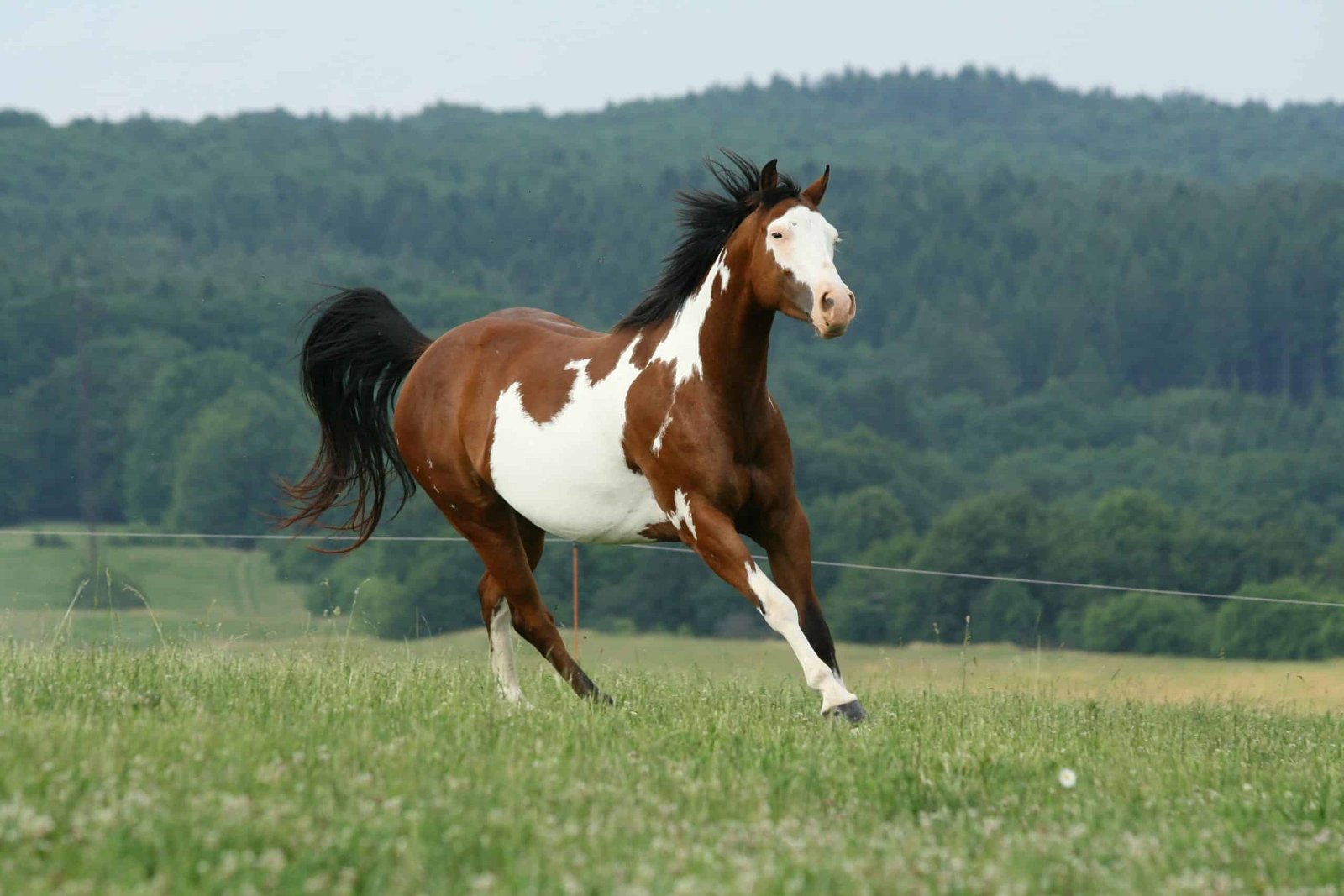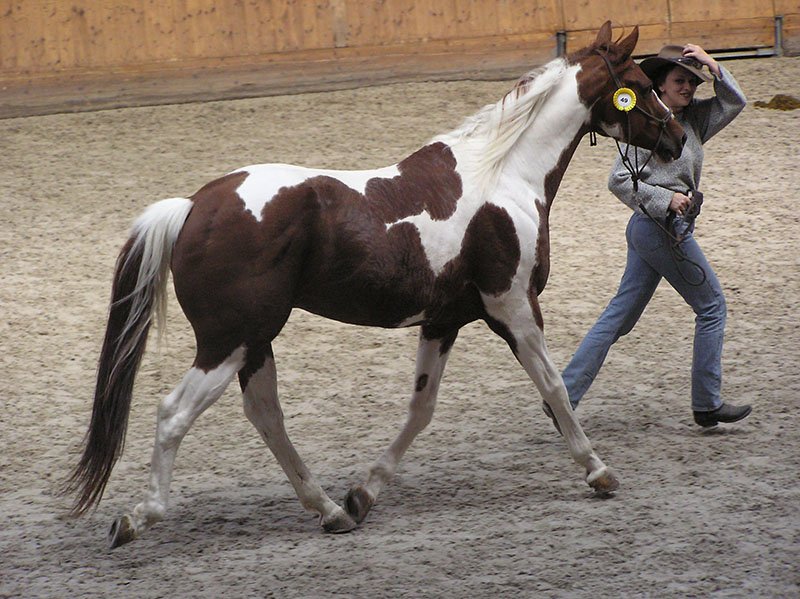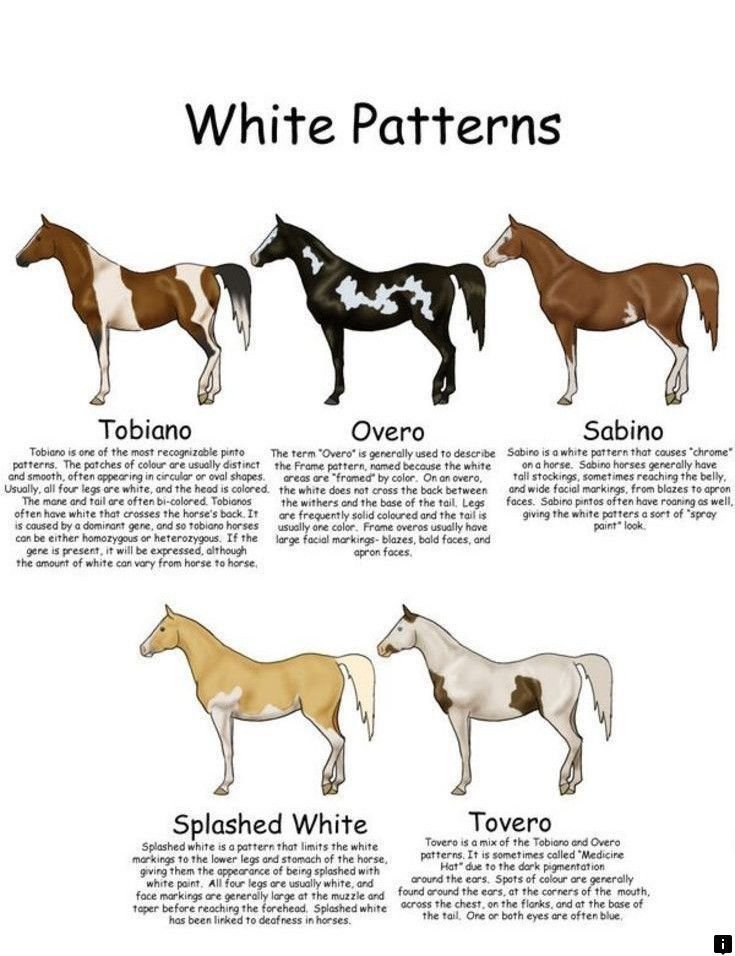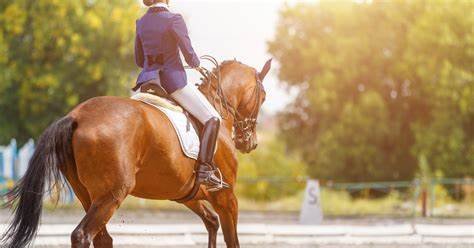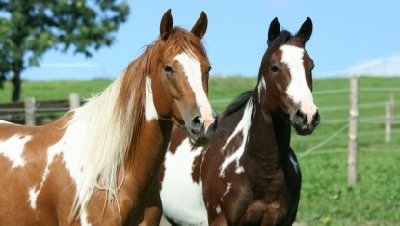Paint Horses are one of the most visually striking and beloved breeds in the equestrian world. Known for their distinctive coat patterns, these horses are not only admired for their beauty but also for their versatility and athleticism. The term “Paint Horse” refers to a breed that has a specific combination of color and conformation, though the name often sparks confusion due to its association with color patterns seen in other horse breeds as well. In this article, we will explore what makes Paint Horses unique, focusing particularly on their eye-catching color patterns, and the characteristics that distinguish them from other equine breeds.
1. The Origin of Paint Horses: The Paint Horse’s history is deeply intertwined with that of the American Quarter Horse and Thoroughbred. The breed’s origins trace back to the Native American horses that were introduced to the Americas by Spanish explorers in the 16th century. These horses, known for their hardy nature and colorful coats, were bred with other equines, including the English Thoroughbreds. Over time, the breed was solidified, and in 1962, the American Paint Horse Association (APHA) was established to recognize and promote the Paint Horse breed in the United States.
- Breed Heritage: The American Paint Horse shares a similar ancestry with the American Quarter Horse, often being classified as a color breed, as it can come in multiple colors and patterns. However, the distinguishing factor that separates a Paint from other breeds is the unique color patterns that are not typically found in purebred Quarter Horses.
2. Understanding the Color Patterns of Paint Horses: What truly sets Paint Horses apart is their distinctive coat patterns. Paint Horses can have a variety of different color patterns, which not only make them stand out but also have an influence on their registration with the APHA. These patterns typically fall into three primary categories: Overo, Tobiano, and Tovero.
- Overo: This is one of the most recognized patterns seen in Paint Horses. Overo horses usually have white markings that do not cross their back between the withers and tail. The white areas on an Overo can cover the face, legs, or belly, often forming jagged, irregular patches. These horses typically have darker-colored bodies with larger white areas scattered throughout. The pattern is often asymmetrical, adding to the uniqueness of each horse.
- Tobiano: Tobiano is the most common color pattern seen in Paint Horses. These horses typically have large white markings that usually cross over their back, forming symmetrical spots or patches. Unlike the Overo pattern, the white markings on a Tobiano often appear in a more predictable, even manner. The white may cover the horse’s legs, belly, and face. The color contrast between the dark and white areas is typically sharp, making the horse appear almost “painted.”
- Tovero: Tovero horses have a mix of both Overo and Tobiano patterns, often showcasing the characteristics of both. Their coats may feature irregular white markings, along with symmetrical patches that span their backs. Tovero horses tend to have a variety of white markings on their faces and legs, making them look particularly striking.
Each of these patterns is part of the breed’s genetic makeup, passed down through generations. The gene responsible for these patterns is dominant, which means that they can be passed down even if only one parent has the pattern.
3. The Significance of Coat Colors: While the patterns themselves are what distinguish Paint Horses, the actual colors also play a role in their identity. The breed can come in a variety of colors, with common ones including:
- Black: A solid, deep black coat often with white markings on the face or legs.
- Bay: A reddish-brown coat with a black mane, tail, and lower legs.
- Chestnut: A solid red color, typically with white markings.
- Brown: A darker, deeper brown coat with a slightly lighter mane and tail.
- Palomino: A golden coat with a white mane and tail.
These colors, combined with their striking patterns, give each Paint Horse a unique appearance, making them a favorite in many different equestrian disciplines.
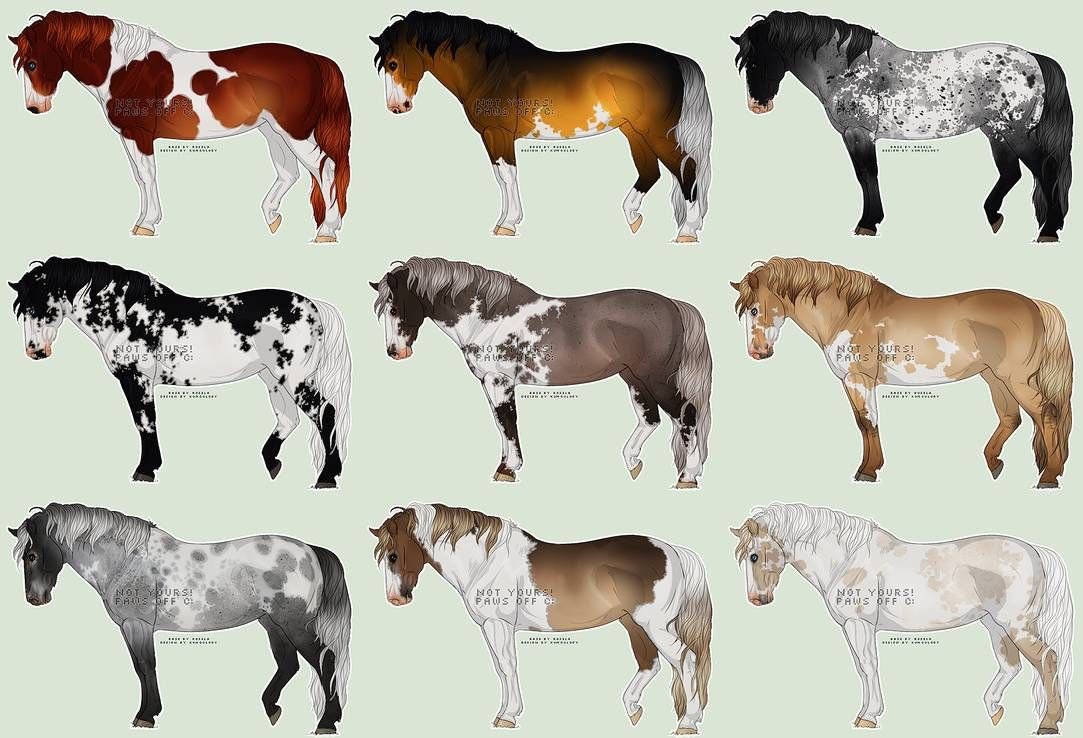
4. The Paint Horse’s Unique Conformation: Aside from their beautiful coats, Paint Horses are known for their well-balanced conformation and athletic abilities. They are sturdy, muscular horses that possess the agility and endurance needed for a variety of equestrian activities, including Western riding, dressage, and jumping. Their strength and speed make them particularly well-suited for activities like cutting, reining, and barrel racing.
- Build: The Paint Horse typically has a compact, muscular body with a well-defined chest and powerful legs. This build helps them maintain balance and speed during high-energy activities.
- Height and Weight: Paint Horses generally range from 14.2 to 16 hands in height and can weigh between 950 to 1,200 pounds, depending on their conformation.
While they share physical traits with Quarter Horses, such as their broad shoulders and strong hindquarters, Paint Horses are distinct in their coat patterns and colors, making them particularly striking in both appearance and ability.
5. The Versatility of the Paint Horse: In addition to their beautiful colors, Paint Horses are highly versatile and excel in various disciplines. Their calm temperament, combined with their agility and speed, makes them excellent choices for a wide range of equestrian activities. Some of the most popular disciplines for Paint Horses include:
- Western Riding: The Paint Horse is often seen in Western disciplines such as barrel racing, roping, and cutting. They are quick thinkers and respond well to the demands of these activities.
- English Riding: Paint Horses also excel in English disciplines like dressage, eventing, and show jumping, where their agility and focus come in handy.
- Trail Riding and Endurance: The breed’s stamina and solid build make them excellent for long-distance trail riding and endurance events.
Beyond competition, Paint Horses are also adored as pleasure horses for recreational riders, thanks to their friendly personalities and willingness to work.
6. Health Considerations: Like all breeds, the Paint Horse requires regular care to maintain its health and well-being. A well-balanced diet, regular exercise, and proper grooming are essential for keeping a Paint Horse in top condition. The breed tends to have a long lifespan, often living well into their 20s, with some reaching their 30s with proper care.
Conclusion: Paint Horses are a remarkable breed, offering a combination of beauty, athleticism, and versatility. Their unique color patterns, including Overo, Tobiano, and Tovero, make them one of the most striking horses in the world. Whether in the show ring, on the trails, or competing in Western or English disciplines, the Paint Horse proves time and time again that it is much more than just a pretty face. With their vibrant coats and exceptional skills, Paint Horses continue to capture the hearts of equestrians around the globe.







